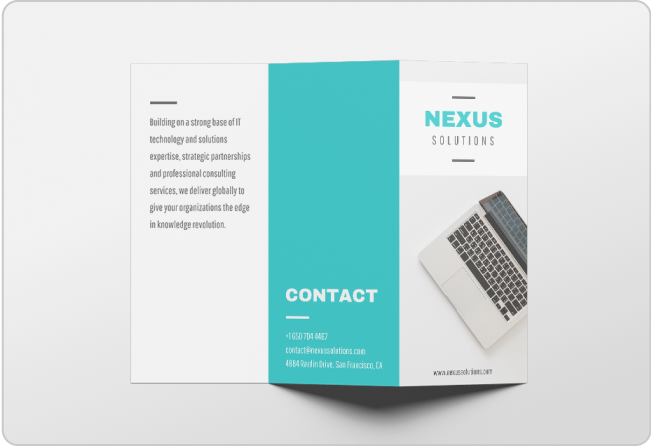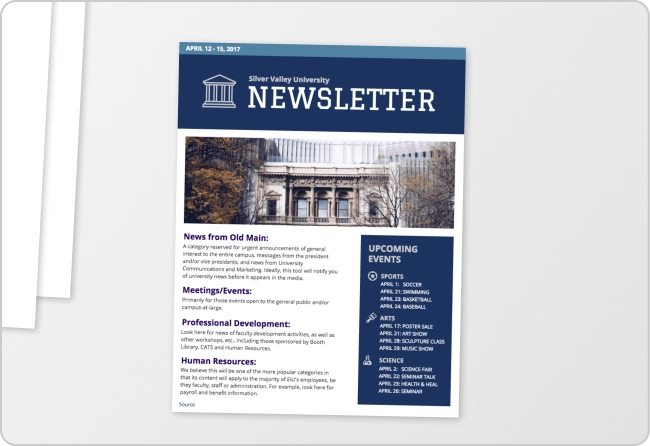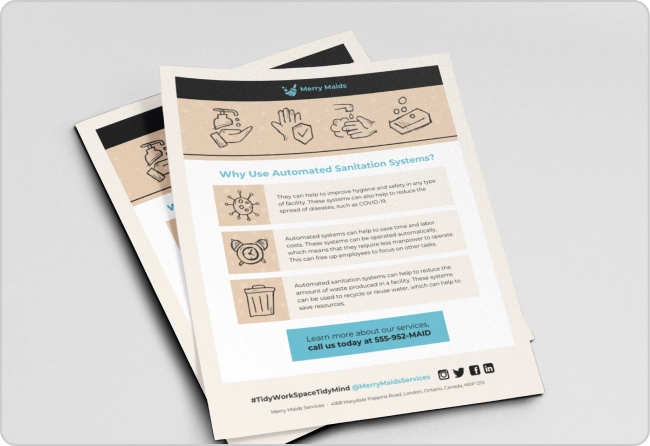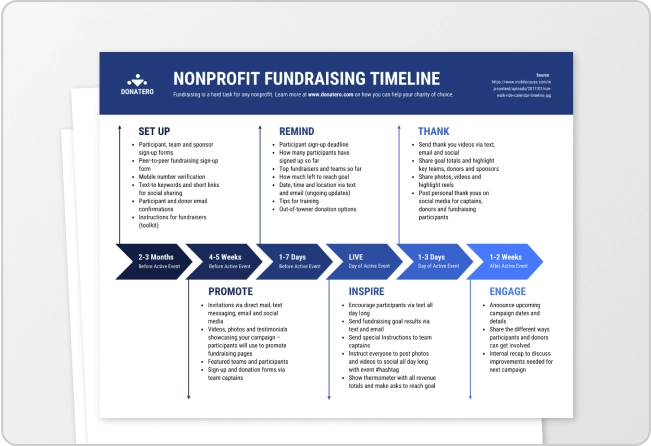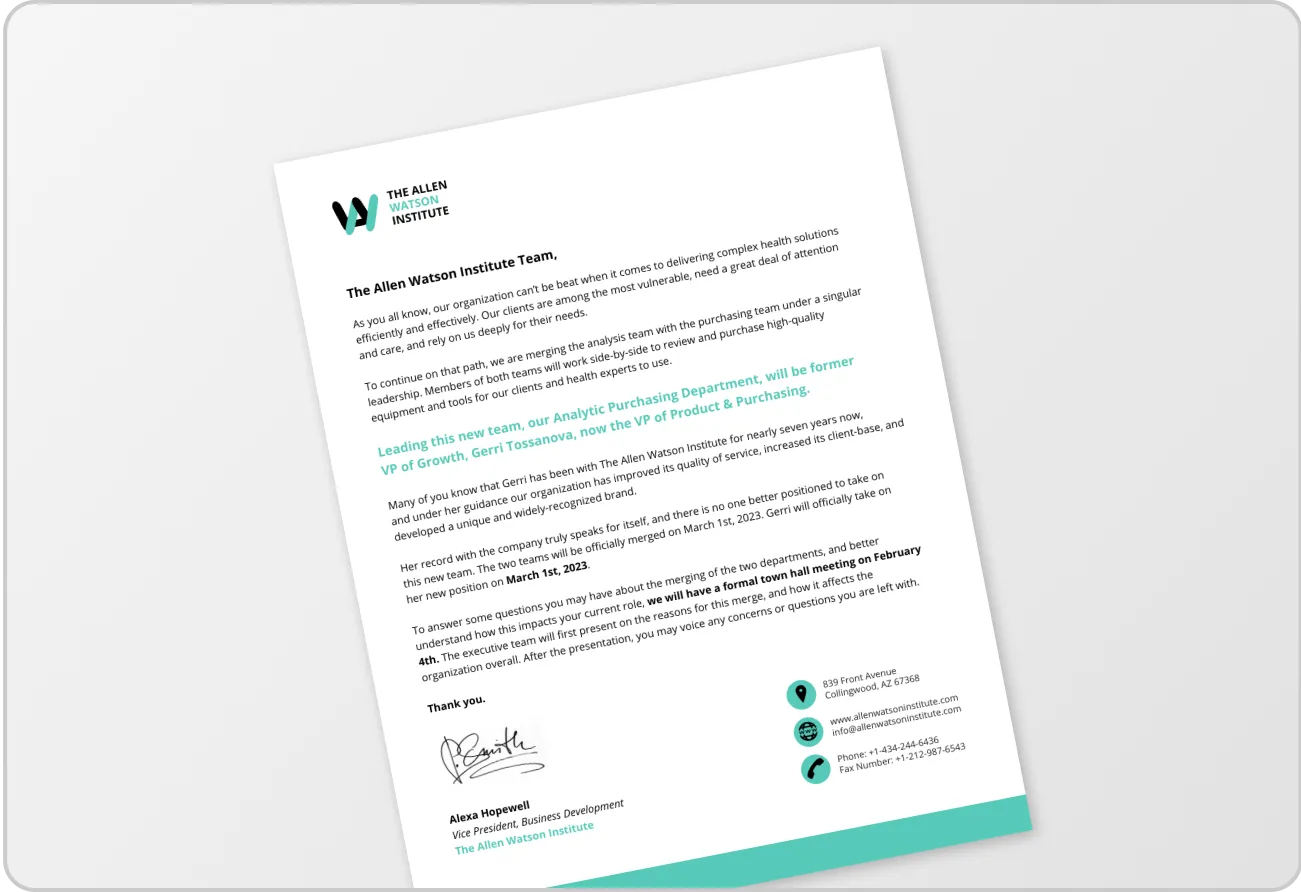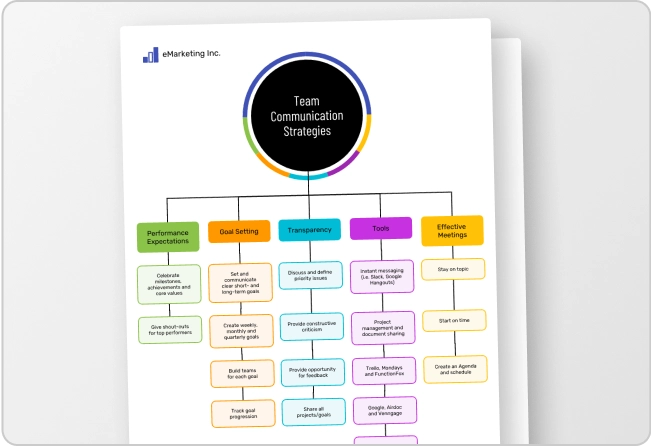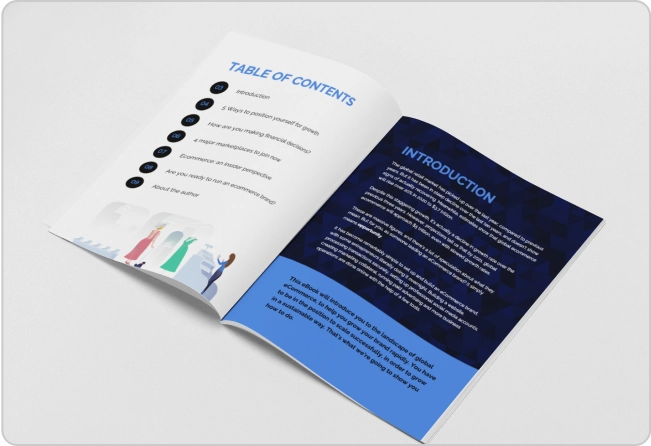
Most marketers hate writing technical white papers.
After all, you’re not the subject matter expert (SME). You often have to chase down SMEs, simplify jargon and risk ending up with something that’s either too complex.
In this blog, I’ll walk you through the process of how to plan, research and write a technical white paper that speaks clearly to your audience and drives results without wasting your time.
What is a technical white paper?
A technical white paper is a data-driven guide that defines a complex challenge and outlines a solution. Brands use it to explain technical topics, show their product’s role or help decision-makers see the bigger picture.
For instance, businesses that cater to technical audiences like developers, UX designers or cybersecurity analysts use them to inform and persuade.
If you already have research insights, you can start with a template that organizes visuals and flow. Here’s an example: this template presents complex ideas with clarity and impact.
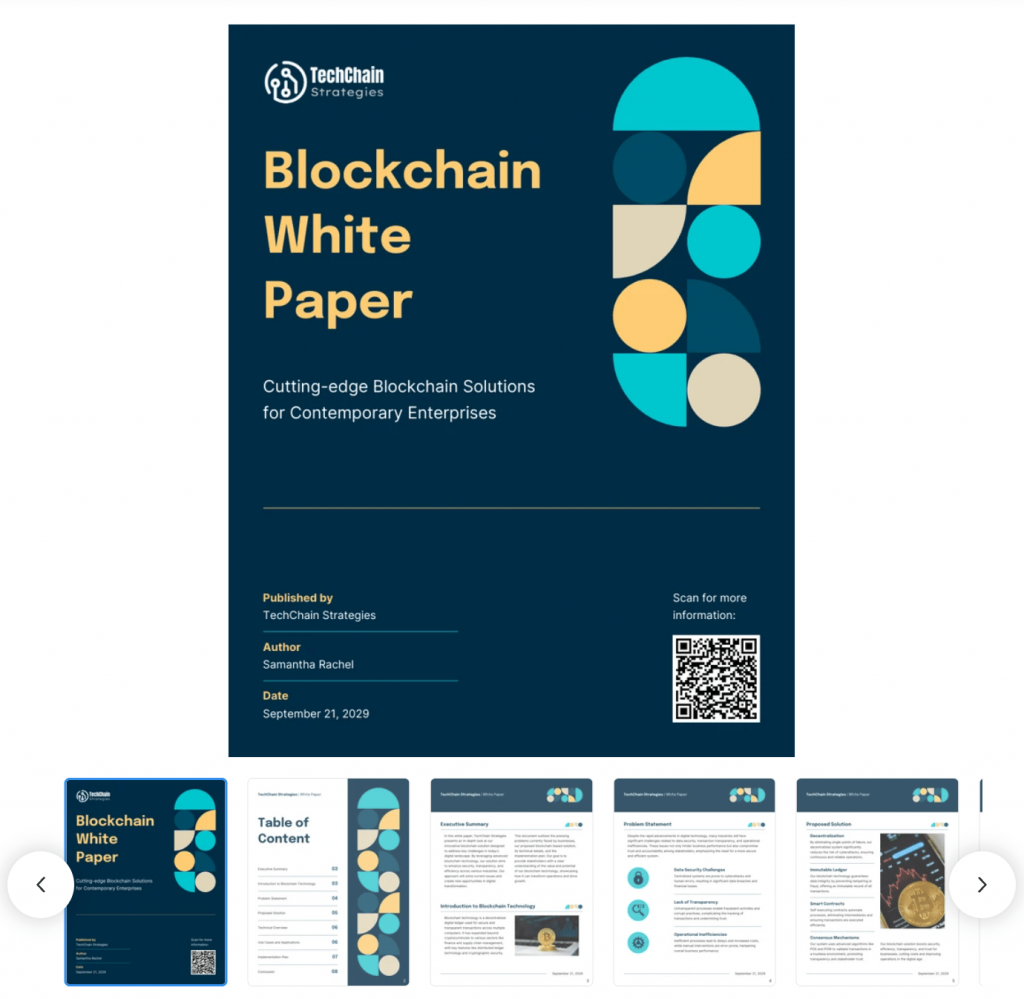
Key components of a technical white paper
A good technical white paper follows a structure that makes it easy for both technical and non-technical readers to follow the argument from start to finish.
Here’s how to write a technical white paper that works best across most scenarios.
1. Title and abstract
Your title should grab attention and show both the topic and the value. Avoid vague headlines like Improving Network Security. Instead, aim for specifics such as “Reducing Network Breaches by 45% Through Zero-Trust Architecture.”
Similarly, use your abstract like an elevator pitch: briefly state the problem, approach and outcome. Many readers decide whether to continue based on this alone.
Here’s a white paper example that quantifies risks and pulls readers to the next page:
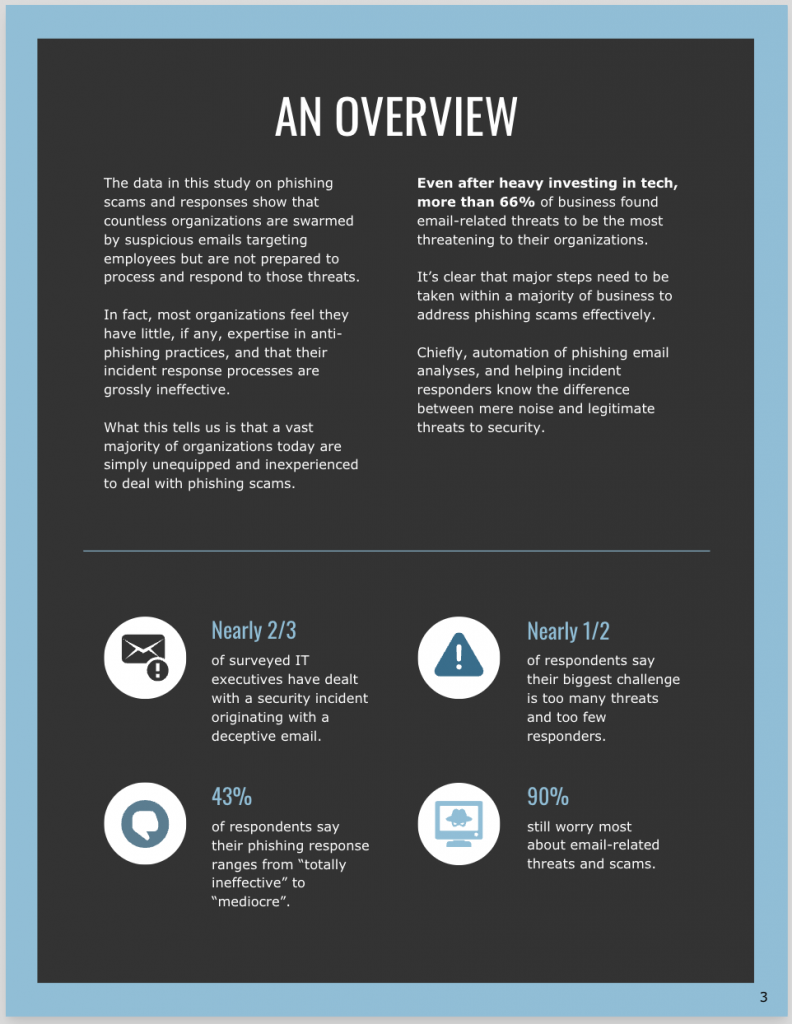
2. Introduction
The introduction or problem statement should show why the topic matters. Use a data point to create urgency, e.g., “In 2025, manufacturing downtime rose 19% due to preventable equipment failures.”
This hooks readers and sets context. The template below does it well, framing the topic, highlighting the problem and hinting at the solution in one glance:
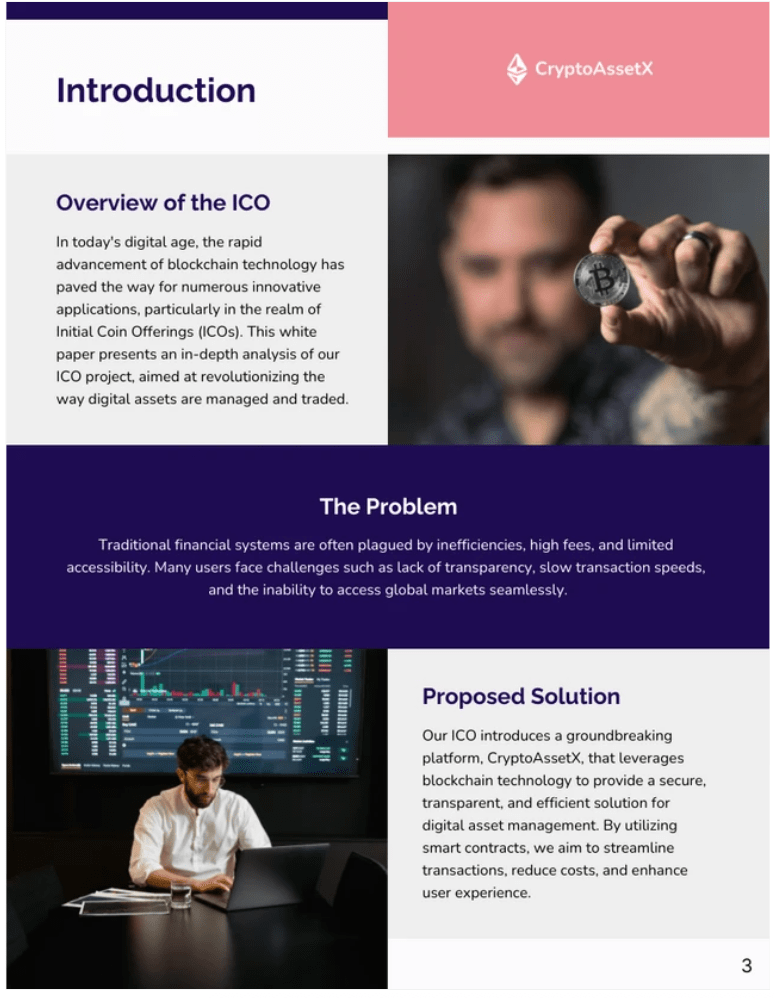
3. Background or context
Give your readers a good background to understand the technical landscape that you’re covering. That might include a historical perspective of the domain, relevant industry statistics or a teaser of your research findings.
The goal is to get readers to be on the same page before you dive deeper in the paper. Here’s an example:

4. Methodology or approach
This is a great place and opportunity for you to gain credibility. Explain the process you took to research the topic, the tools or models you used or why you chose them.
For example, if you tested a new algorithm, mention how you trained it, the data sources or how you validated the results. Keep it factual and transparent.
This template does exactly that:

5. Results or solution
Show outcomes and guide readers from problem to solution. It helps to structure this section so the readers see:
- The problems you addressed
- The specific actions you took
- The results that followed
To make this section more compelling, use specific numbers or real-world examples. If you are promoting your product or service, this is a good opportunity for you to plug yourself. But be careful to position the value more than the pitch.
Here’s a template that allows you to do this:
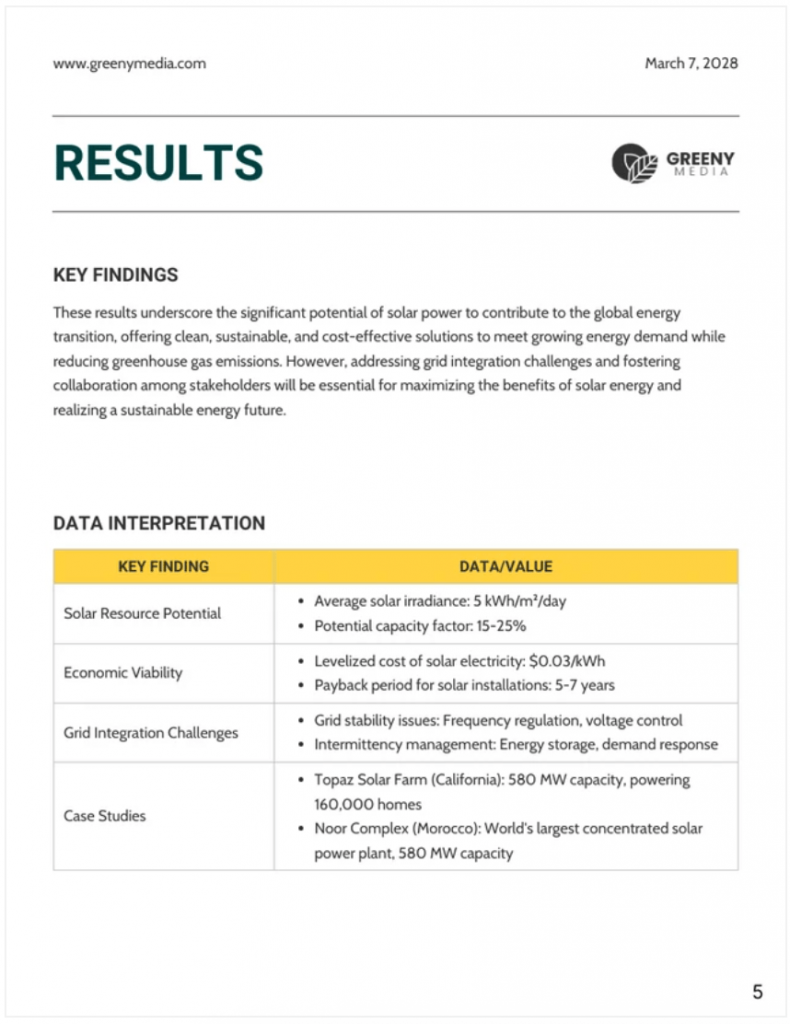
6. Conclusion and call-to-action
Revisit the problem, the solution and the benefits in simple language. Ideally, you should also suggest a logical next step.
In a technical white paper, a call-to-action might point the readers to a detailed case study, book a technical consultation or review product documentation.
7. References and appendices
Back every claim with data, citations, standards or relevant datasets. Link supporting diagrams, code or test data in the appendix to avoid clutter.
This template presents conclusions, call-to-action and references neatly in one place:
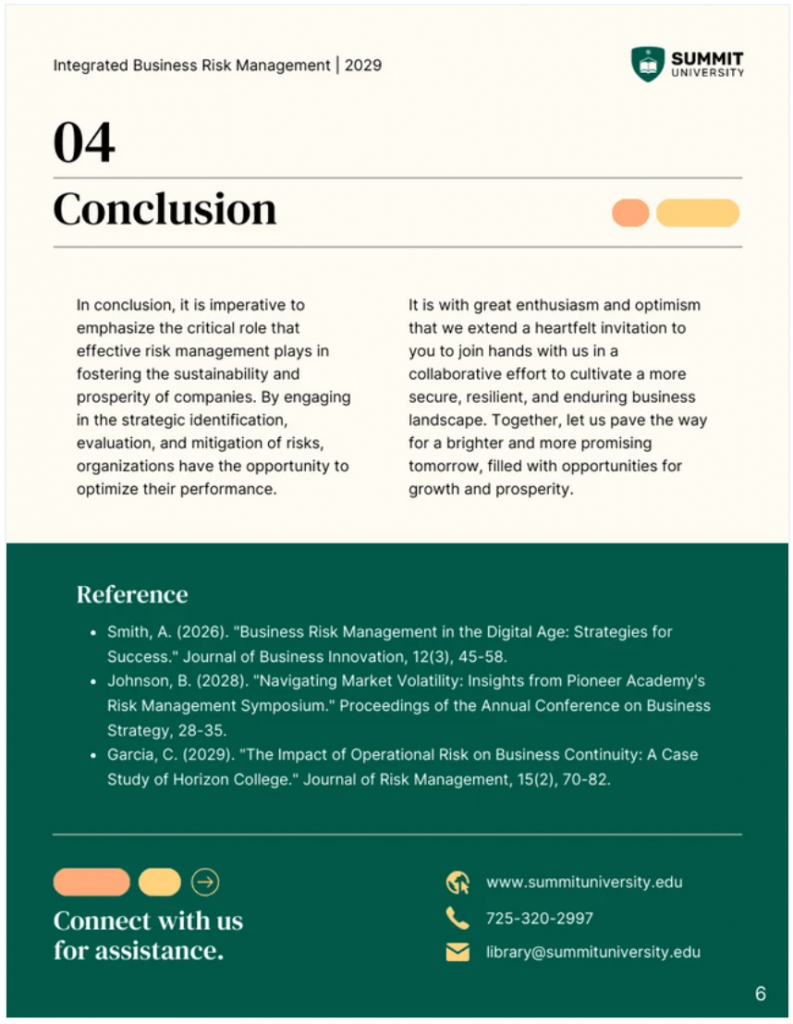
Step-by-step guide to writing a technical white paper
To make this section concrete, I’ll work with a hypothetical example: Reducing API Latency by 30% for a Global SaaS Platform.
I’ll use this template:

Part 1: Pre-writing and planning
Step 1: Identify your audience and goal
Define the exact problem you’re solving and avoid vague statements.
Example: “Our solution helps businesses reduce their API response time from 400 ms to 280 ms within two release cycles.”
Then identify who will read your paper and what matters to them. For instance:
- Backend engineers: concerned with scalability and fault tolerance.
- QA specialists: focused on automated test coverage and regression risk.
- Product managers: want to see the cost-benefit ratio and roadmap impact.
Set SMART objectives for the paper itself. For example:
- Show benchmark comparisons pre- and post-optimization.
- Provide implementation steps reproducible by other teams.
- Deliver findings within 90 days of initiating the project.
All of this information is for your own planning. None of it has to actually go in the white paper design, at least not at this stage.
Here’s how I customized the above template to fit my topic:

Step 2: Gather and validate technical data
To make your paper credible, collect everything that supports your case:
- Benchmark summary table showing latency in milliseconds, throughput in requests per second and server load percentages.
- Code snippets for critical functions, with comments explaining purpose and complexity.
- Architecture diagram to show the API request flow before and after optimization.
- SME quotes validating why you chose a certain approach.
I added a new page in the template and added the above data:
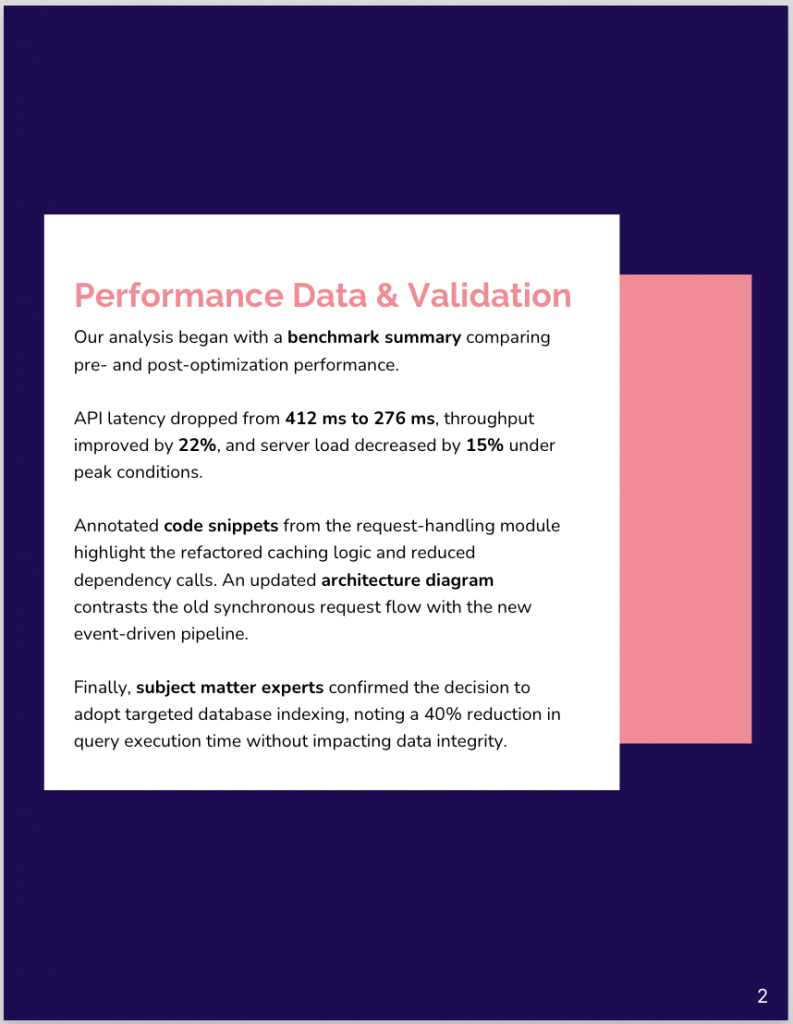
Validation matters as much as collection. Cross-check all figures against original logs or monitoring tools to avoid publishing inaccurate data.
Step 3: Build and annotate your outline
Your outline is the skeleton that keeps you focused. It reflects the structure we covered in “Key components of a technical white paper.”
Under each heading, add bracketed notes for your references. For instance, here’s how I usually do it:
- Introduction: “[Insert key metric chart here]”
- Methodology: “[Include sequence diagram showing request flow]”
- Results: “[Insert comparison table of latency before/after changes]”
This saves time during drafting and makes it clear to reviewers what goes where.
Part 2: Writing and post-writing
Step 4: Draft with technical precision
Each section should serve a clear purpose. In the case of my white paper topic, here are a few things I can do:
- Background: Explain how global scaling introduced latency, citing internal SLA reports and published API performance guidelines.
- Methodology: Audit database queries for inefficiencies; implement caching for repetitive calls; optimize load balancer configuration.
- Implementation: Provide a snippet of the caching function with concise inline comments.
- Results: Use a chart to show latency improvements per region; label axes and units. End with the takeaway: “Global average latency improved by 32% after optimizations.”
Here’s how I drafted the findings in my white paper:

Step 5: Peer review and revision
Don’t skip peer review; it’s where your claims meet credibility. Use an accuracy checklist to:
- Confirm data tables match source logs.
- Verify code compiles and passes all tests.
- Ensure terminology aligns with industry standards.
Summarize SME feedback in bullets and note how you addressed each of them. Example: “<SME> suggested adding a diagram for multi-region failover; added to Methodology section.”
I always work on Google Docs, and here’s how my notes look like:
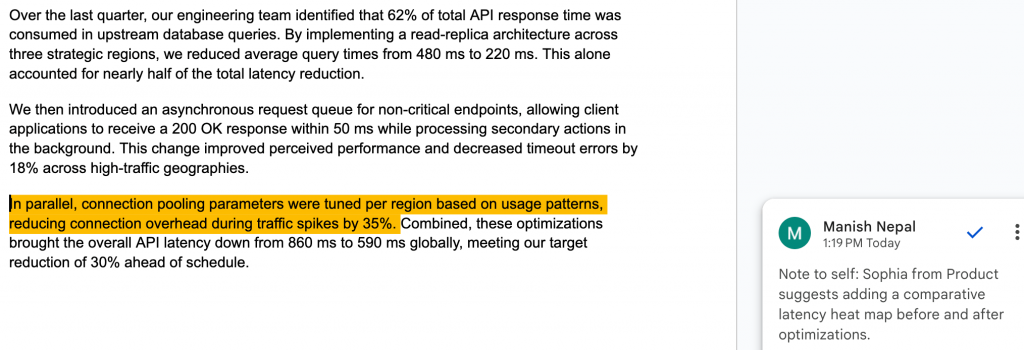
If your white paper’s target audience are engineers, for example, gaining their trust isn’t easy.
As Wendy Covey, CEO & Co-Founder of TREW Marketing, notes, engineers can instantly spot the difference between marketing fluff and content created by your technical team.
Step 6: Finalize layout and metadata
This is where design and polish cross paths with technical detail:
- Check that your table of contents links to each section.
- Add captions and alt text to every visual.
- Include version number, publication date and author contact details.
- Format citations consistently in IEEE or APA style.
And since I had the content ready and a clear plan, I designed a new white paper in Venngage in less than 40 minutes:

With Venngage’s AI White Paper Generator, you can cut that time down even further.
Best practices for writing a great technical white paper
A technical white paper works best when it feels like the smartest person in the room is explaining a problem step by step, without making you feel confused.
Here’s what separates a great technical white paper from one no one finishes reading.
1. Use clear, concise language
- Think “engineering stand-up” instead of corporate euphemisms. For example, instead of writing “This process facilitates improved transactional throughput”, say “This speeds up transactions.”
- Use shorter sentences. Cutting sentence length to 14 words or less improves comprehension by ~90%.
2. Avoid jargon unless necessary
- If a term is industry-standard (e.g., Kubernetes pod or Kafka broker), keep it. If it’s company-specific slang (e.g., Real-Time Data Sync or Primary High-Availability Cluster), either elaborate it or drop it entirely.
- Create a mini-glossary for acronyms and technical terms at the start or end. It saves the reader from having to Google “What’s MTTR again?” mid-way.
As film director and screenwriter Alexander Mackendrick put it, “If it can be cut out, then cut it out.” Removing the non-essential only makes what’s left stronger.
3. Use visuals strategically
- A complex architecture described in text takes 250 words. But a labeled diagram takes 10 seconds for readers to understand.
- Match visual type to purpose:
- Diagrams for system architecture
- Tables for benchmarks or comparisons
- Charts and graphs for trends over time
4. Avoid fluff
- A white paper is not a marketing brochure. “Our solution is industry-leading” means nothing without proof or relevance.
- Replace flowery adjectives with measurable outcomes. For instance, instead of “world-class security”, say “encryption with a 0.01% false-positive rate.”
When writing a technical white paper, there is always a fine line to be trod between marketing and delivering thought leadership and technical information.
Angela Greaves, Marketing Communications Specialist, Source
5. Use evidence and citations
- Treat the white paper like you’re going to get fact-checked (or worse, sued) for reporting false data. If you’re claiming a 30% performance gain, show the benchmark data, test environment and methodology.
- Cite credible sources: official documentation, peer-reviewed journals, industry benchmarks.
Related: For more tips on creating a great white paper, check out our blog on how to write a winning B2B white paper.
Formatting your technical white paper
Writing a technical white paper involves giving your message the space and clarity it deserves and in a way that readers’ brains can process.
1. Ideal length
For most technical audiences, 4,000 words (or ~6 to 12 pages) strikes the balance between depth and readability. On average, technical white papers tend to be 4,038 words long. That means most readers stay engaged at that length.
If your draft runs significantly longer, split it into separate white papers.
2. Formatting styles
The style you choose should match the conventions of your audience.
IEEE, common in engineering, uses numbered citations in square brackets and tightly numbered section headings, making it ideal for precision-heavy documents.
APA, on the other hand, favors a narrative structure that works better when explaining complex ideas in plain language. The style should guide your paper’s structure but not dictate the clarity of your arguments.
3. Table of contents, headings, numbering
Always include a linked Table of Contents for long PDFs or HTML documents. It helps readers navigate the paper easily.
Use numbered headings like “1.1 Introduction” or “2.1 Results” to keep readers oriented and write labels that convey exactly what follows. This helps readers follow the content logically.
4. Publication medium
PDFs preserve layout, diagrams and typography, making them the default for white papers. HTML works better online with hyperlinks, mobile-friendly formatting and engagement tracking.
You can publish both formats to serve readers who want to read online or download a printable version.
Related: Want to know which one is better for accessibility? Check out our PDF vs. HTML guide to see which format suits your audience.
How to start writing a technical white paper
The fastest way to stall out on a white paper is to open a blank document and wait for brilliance to strike you.
There’s no such thing as writer’s block. As long as your fingers can move over the keyboard, eventually it’ll segue into something.
Mary Kay Andrews, New York Times bestselling author, Source
Writing one isn’t about finding the perfect opening sentence. Instead, you should follow a clear roadmap and move through it without overthinking each step.
Outline first
Plan your outline before writing. Include introduction, background, problem, solution, results and conclusion. This is a foundation that helps spot gaps early and keeps the white paper focused.
Start with the problem
Start with a real, quantified problem your audience faces. Show its impact clearly so readers immediately understand why it matters before diving into the details.
Write sections in any order
If the introduction slows you down, skip it and start with the sections you know best. Writing out of order keeps momentum and avoids the “perfect intro” trap.
Once your draft is ready, pick a template to focus on content, not design, so you can polish and publish without spending days tweaking layouts.
FAQs about technical white papers
Here are quick answers to some of the most common questions people ask about writing a technical white paper.
1. What’s the difference between a white paper and a research paper?
A white paper explains a problem and proposes a solution, often for business or industry use. A research paper presents original findings or analysis, typically aimed at academic or scientific audiences.
2. How long should a technical white paper be?
Most technical white papers range between 4,000–6,000 words (i.e., between 6–12 pages). It’s a perfect length that allows enough depth to explain complex topics while keeping readers engaged throughout.
3. How much should I charge to write a white paper?
Freelance rates for technical white papers typically range from $3,000–$10,000, depending on complexity, research required and industry. Highly technical fields or niche expertise can command higher fees.
4. How much should I pay someone to write my paper?
Expect to pay $3,000–$10,000 for a professional technical white paper, depending on length, research depth and subject matter expertise. Highly specialized topics may cost more.
Free Template
Want to test out a technical white paper template like I did above? Use the free template below.
It’s clean, structured and the visual placeholders (in the pages that follow) make it easy to guide readers from problem to solution.

You’ve got the data, the insights and the story that could move your industry forward. The only risk now is letting it sit in your files instead of shaping it into something people can use, share and learn from.
Every competitor with a half-baked PDF is already vying for your audience’s attention. Why not give them a reason to choose yours?
Start building your white paper with Venngage’s free, professional white paper templates. You’ll skip the design headaches and focus on what matters: making your expertise impossible to ignore.





























